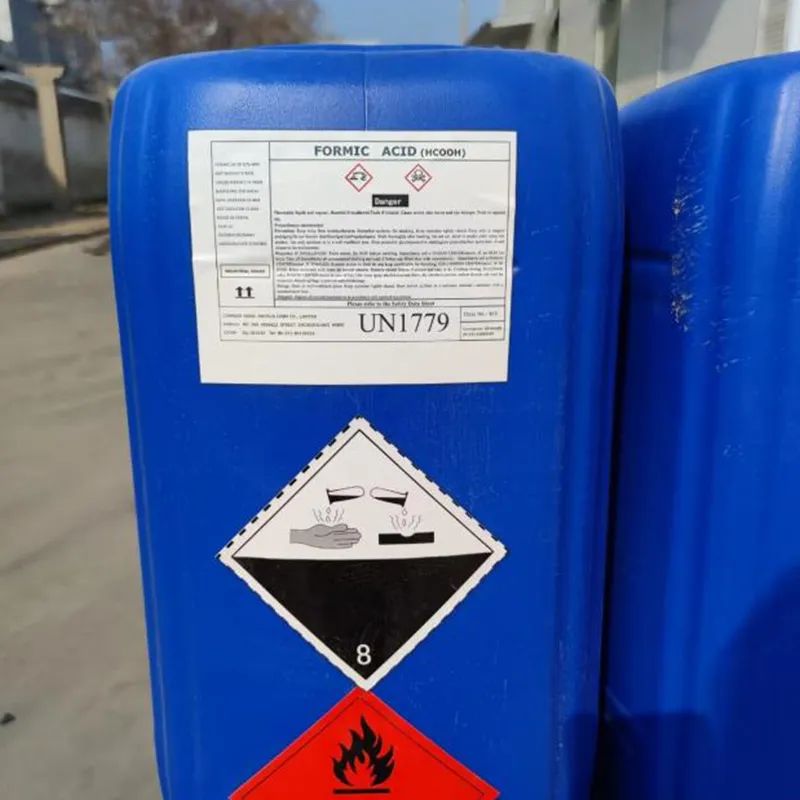
Understanding the Properties and Applications of Concentrated Glacial Acetic Acid in Various Industries
Concentrated Glacial Acetic Acid Properties, Uses, and Safety Considerations
Glacial acetic acid, a pure form of acetic acid, is a colorless liquid with a strong, pungent odor. It is a vital chemical in various industries, known for its high concentration (typically over 99%) and distinct properties. The name glacial comes from its ability to solidify into a crystal-like form at low temperatures (around 16.6 degrees Celsius), resembling ice. Understanding concentrated glacial acetic acid is essential for many applications, ranging from chemical synthesis to food production.
Chemical Properties
Concentrated glacial acetic acid has a molecular formula of C2H4O2 and is characterized by its carboxylic acid functional group. This compound possesses a high boiling point (about 118 degrees Celsius) and a low vapor pressure, which makes it less volatile compared to other organic solvents. Its miscibility with water allows it to form a variety of solutions, but extreme caution is advised as it reacts violently with strong oxidizers and can release harmful gases under certain conditions.
Industrial Applications
One of the principal uses of concentrated glacial acetic acid is in the production of various chemicals. It serves as a key raw material in manufacturing acetate esters, which are valuable solvents and intermediates in polymer production. For instance, ethyl acetate and butyl acetate are synthesized from glacial acetic acid and are widely employed in paint, coatings, and adhesives due to their excellent solvent properties.
concentrated glacial acetic acid

Moreover, glacial acetic acid plays a crucial role in the textile industry, where it is used to produce rayon and as a mordant in dyeing processes. Its strong acidic properties help enhance the vibrancy and adherence of dyes to fabric. In the food industry, diluted solutions of acetic acid are commonly used as a food preservative and flavoring agent, especially in pickling processes. While concentrated glacial acetic acid is not directly used in food products, it exemplifies the versatility of acetic acid across various industries.
Laboratory Uses
In laboratories, concentrated glacial acetic acid is an indispensable reagent. It is often utilized in the synthesis of various organic compounds and serves as a solvent for reactions where a strong acid is required. Furthermore, it is used in titrations to determine the concentration of bases or other alkaline substances. Its role as a dehydrating agent in organic synthesis is also noteworthy, particularly in the production of anhydrides and acetates.
Safety Considerations
Despite its numerous applications, glacial acetic acid poses significant health and safety risks. It is classified as a corrosive substance, capable of causing severe burns upon contact with skin or eyes. Inhalation of vapors can lead to respiratory issues and irritation of mucous membranes. Therefore, it is crucial to handle concentrated glacial acetic acid with appropriate personal protective equipment, including gloves, goggles, and lab coats. Work should be conducted in well-ventilated areas, preferably under a fume hood, to mitigate the risk of inhalation.
In conclusion, concentrated glacial acetic acid is a powerful and versatile chemical used in a wide range of applications, from industrial manufacturing to laboratory research. While its benefits are substantial, the associated safety risks necessitate strict handling protocols to protect workers and the environment. Understanding both its potential and hazards is essential for anyone working with this significant chemical.
-
nitrile-rubber-honoring-strict-production-standardsNewsAug.22,2025
-
aspartame-ingredients-honoring-food-safety-valuesNewsAug.22,2025
-
fertilizer-for-balanced-plant-nutritionNewsAug.22,2025
-
cyanide-gold-processing-with-high-purity-additivesNewsAug.22,2025
-
formic-acid-in-textile-dyeing-applicationsNewsAug.22,2025
-
aluminum-hydroxide-gel-in-skincare-productsNewsAug.22,2025
-
Regulatory Compliance for Global Mining Chemicals UseNewsAug.12,2025
Hebei Tenger Chemical Technology Co., Ltd. focuses on the chemical industry and is committed to the export service of chemical raw materials.
-

view more DiethanolisopropanolamineIn the ever-growing field of chemical solutions, diethanolisopropanolamine (DEIPA) stands out as a versatile and important compound. Due to its unique chemical structure and properties, DEIPA is of interest to various industries including construction, personal care, and agriculture. -

view more TriisopropanolamineTriisopropanolamine (TIPA) alkanol amine substance, is a kind of alcohol amine compound with amino and alcohol hydroxyl, and because of its molecules contains both amino and hydroxyl. -

view more Tetramethyl Thiuram DisulfideTetramethyl thiuram disulfide, also known as TMTD, is a white to light-yellow powder with a distinct sulfur-like odor. It is soluble in organic solvents such as benzene, acetone, and ethyl acetate, making it highly versatile for use in different formulations. TMTD is known for its excellent vulcanization acceleration properties, which makes it a key ingredient in the production of rubber products. Additionally, it acts as an effective fungicide and bactericide, making it valuable in agricultural applications. Its high purity and stability ensure consistent performance, making it a preferred choice for manufacturers across various industries.





